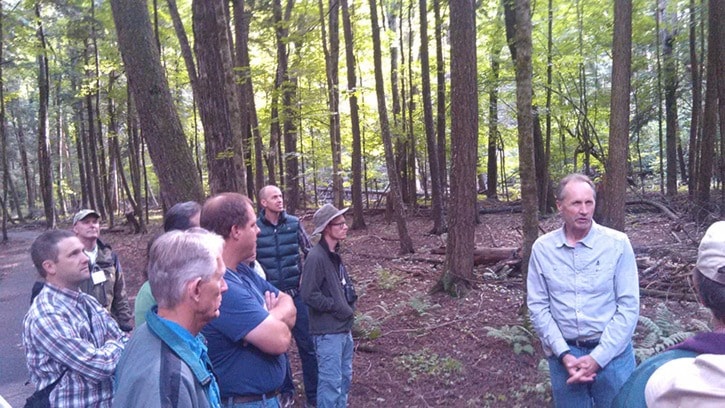We stood under the towering pines, listening to a story of what could have happened below our feet.
The pines were part of the last old growth remaining in Michigan’s Lower Peninsula, at Hartwick Pines State Park. Fred Van Dyke, director of the Au Sable Institute of Environmental Studies, told us we were in the age of the third wave of resource extraction in Michigan.
I was there among my peers from a group of colleges and universities across North America who send students to take field courses at Au Sable and encounter these environmental dilemmas first hand.
The resource below our feet was oil. Would the last remaining trees that survived the second wave — lumber extraction — be sacrificed for the sake of oil?
Not at all. Directional drilling under the site was proposed, which would have no impact on the 400-year-old trees. The site was nominated for a mineral lease, to be evaluated by the Michigan Department of Natural Resources in a public process.
Despite the fact that the directional drilling would apparently cause no damage to the old growth forest, and thereby have no effect on use of the state park, many spoke out against the extraction of oil under the old growth pines.
Why? What was it about the relationship of the people to this place that even an action with no impact on the forest would be categorically opposed?
When the Michigan DNR announced they would not allow the drilling, the President of the Michigan Environmental Council, Chris Kolb, said “Personally I’m thrilled that the experience of standing beneath the park’s towering white pines will remain unchanged for visitors to enjoy.”
It was the history of this land that was key to the decision.
Back in 1927, Karen Hartwick had donated the land to the state. Letters submitted by her grandchildren convinced the DNR to “adhere to the spirit and intent of the generous gift of land” stated spokeperson Debbie Munson.
Back in 1927, directional drilling had not been invented, but even if it had, the land was not given for extracting oil, but for protecting trees.
As I stood listening to Van Dyke tell this tale under the whispering pines, I tried to reflect on the general principles.
Humanity needs natural resources to survive, but people also need special places. Sometimes compromises need to be made to allow resource extraction.
Still, sometimes soil is sacred. I was actually born on Michigan soil myself. So maybe because of that, I felt even happier that there would be no drilling under these 400-year-old trees. And happier for the survivors of the first wave of resource extraction in Michigan — furry little animals now once again abundant.
David Clements is a professor of Biology and Environmental Studies at Trinity Western University.
